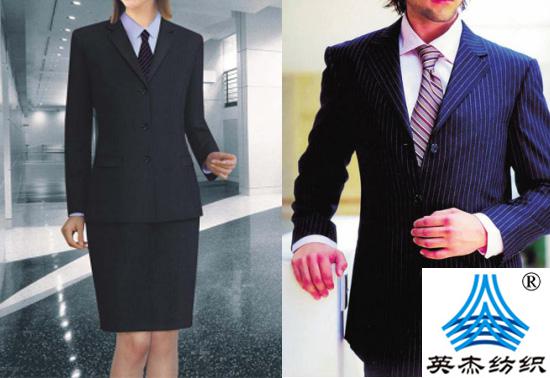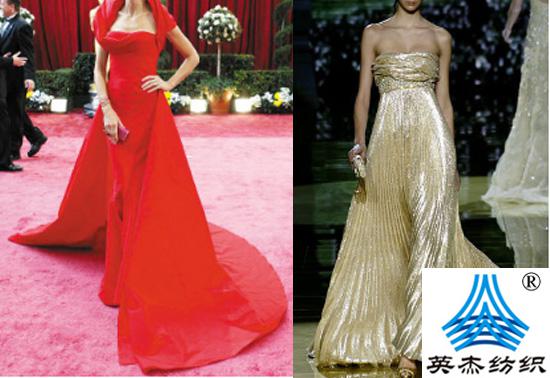Clothing classification and fabric selection
Clothing classification and fabric selection
Basic knowledge about clothing materials is introduced. Since different clothing materials have different styles and properties, and different clothing has different requirements for clothing materials, clothing designers should grasp the adaptability between clothing materials and clothing. This chapter discusses the styles, styles, and characteristics of clothing materials for different clothing. An introduction to performance requirements.
Classification of clothing by occasion
Professional clothing
Dress
Casual wear
Uniform
Professional suits and fabric selection
Professional suits are clothing that people wear when working in industries that do not have special functional or identifying requirements for clothing. Professional suits generally consist of two or more pieces of clothing combined with a complete set of clothing. Usually divided into upper and lower two-piece suits and three-piece suits, they are representative of modern urban professional clothing. Suits are more traditional in design style and focus on the silhouette and details of the clothing, and have higher requirements on the quality and fabric of the garments. When choosing fabrics, special attention should be paid to overall coordination and matching. The fabrics for upper and lower garments (pants or skirts) are usually of the same color, or different-colored fabrics that echo each other are used for matching.
(1) Men’s professional suits and fabric selection
The design style of men’s professional suits has always maintained a stable and low-key style, and the basic composition has not changed significantly. However, the design elements of the suits, such as styling details, color matching, and material combinations, have changed with the changes in fashion trends in each era. , a variety of obviously different design styles have been formed for different age levels and needs.
Formal style: Generally, pure wool worsted fabrics are used, and the colors are mainly black, dark blue, and gray. This style of professional suit has been popular for a long time because it is rarely affected by trends and is suitable for many occasions. It has become a must-have professional suit for men of all ages and in various jobs.
Casual style: Casual style professional suits have a variety of fabric choices. They can choose wool, linen or blended fine and woolen fabrics, often with plaid or striped patterns, and the colors are mostly gray and natural tones, such as beige and sandy earth. , lead gray, brown, etc., the color matching pursues a harmonious effect.

Young fashion style: Men’s professional suits break some traditional methods in terms of style, color matching and material selection. New elastic coated fabrics are used as materials, and the range of colors is larger. They are boldly used in men’s clothing. Bright colors are used, and the same reflective colors with different light and dark shades are used for color matching of interior and exterior clothing.
(2) Women’s professional suits and fabric selection
Compared with men’s business suits, women’s business suits, like other clothing categories for women, change much more obviously with fashion trends. The design and wearing of women’s business suits are not as fixed and standardized as men’s business suits. Instead, they have undergone major changes with the fashion trends of different periods, forming a variety of distinctive design styles.
Orthodox style: This refers to the design of women’s business suits that draw on the characteristics of men’s clothing, such as wide and angular shoulder lines, H-shaped shapes or straight waists, straight-line men’s lapel collars and pocket designs. Wear with trousers or a simple, short straight skirt. In the use of fabrics, the diversity of women’s clothing is maintained, and fabrics of various textures and textures can be used. For example, using different degrees of gray worsted fabrics and simple and well-fitted shapes can create a smart and capable dressing effect; using gray woolen striped fabrics and loose and comfortable shapes can create a simple and relaxed dressing effect.
Casual style: The expression of casual style in women’s professional suits is much richer than that in men’s suits. Casual style became popular in the early 1990s, using loose and moderate shapes, soft and elegant colors, and exquisite fabrics with rich texture effects to design suits that are elegant and leisurely, with a certain relaxed atmosphere without losing professional style. The fabrics are mainly made of natural fiber materials, such as cotton, wool, silk and linen. The texture is simple and friendly, with rich hand feel and strong texture.
Feminine style: This refers to the use of changes in dividing lines to emphasize the contrast of women’s body curves and measurements in the design of professional suits, paying attention to detail modification, choosing soft or gorgeous colors, and choosing materials with rich hand feel and strong texture. fabric production. Made of silk or worsted wool fabrics with soft, elegant colors and comfortable feel
Ceremonial clothing and fabric selection
Entering modern society, both in Chinese and Western societies, as people’s pace of life has greatly improved and the garment industry has risen, people’s ceremonial clothing has become increasingly simplified. While retaining the characteristics of certain traditional dresses, they continue to incorporate the flavor of the times. Dresses are generally divided into three types according to specifications and time: day dresses, evening dresses and wedding dresses.

Day Wear Dresses and Fabric Selection
Day dress is also called “afternoon formal dress”. It is a dress worn by guests for official visits in the afternoon and can also be worn to attend concerts.�The fabric is required to be comfortable and natural, with good moisture absorption and breathability.
Industrial Uniforms and Fabric Selection
Mainly refers to the clothing of workers in medical care, industrial and mining enterprises and other front lines. This type of clothing should fully reflect the characteristics of the profession, and at the same time, consider that their working environment is exposed to different harmful factors. Therefore, the clothing is required to pay attention to protective functionality to ensure the work safety of workers. Commonly used fabrics for ordinary work clothes include cotton, medium-long fiber, chemical fiber and other fabrics. Cotton fabrics such as yarn card, polyester yarn card, cotton thin sail, bead sail, etc., have strong sweat absorption, comfortable wearing, soft feel, and are widely used; medium and long fibers such as polyester card, polyester viscose, etc., have strong fastness; chemical Fibers such as polyester, acrylic, etc. are easy to wash and quick to dry, no wrinkles, no linting and pilling, and are acid and alkali resistant and corrosion resistant. Work clothing for some special types of work will choose specially treated materials with functions such as anti-static, anti-ultraviolet, anti-radiation, flame retardant, and insulation. The outstanding features of medical protective clothing are dustproof, clean and anti-pollution. In terms of fabrics, they include non-woven fabrics, high-density chemical fiber fabrics, etc.
Aviation Uniforms and Fabric Selection
The high image requirements of this industry make it representative in the entire uniform system. It not only requires elegance and refinement, but also fully reflects the styles of different regions and nationalities. Countries attach great importance to the design of flight attendant clothing and strive to integrate aviation uniforms with airport, cabin environment and aviation service concepts to leave a deep impression on passengers. The fabric focuses on practical functionality that is not prone to wrinkles and deformation. It also needs to have a straight appearance, fine texture, breathability and comfort, easy care, and distinctive features. It is mostly decided based on the style of clothing. You can choose higher-grade silk, silk, polyester-cotton, wool, imported chemical fiber and blended fabrics. fWjDAb
Disclaimer:
Disclaimer: Some of the texts, pictures, audios, and videos of some articles published on this site are from the Internet and do not represent the views of this site. The copyrights belong to the original authors. If you find that the information reproduced on this website infringes upon your rights, please contact us and we will change or delete it as soon as possible.
AA







